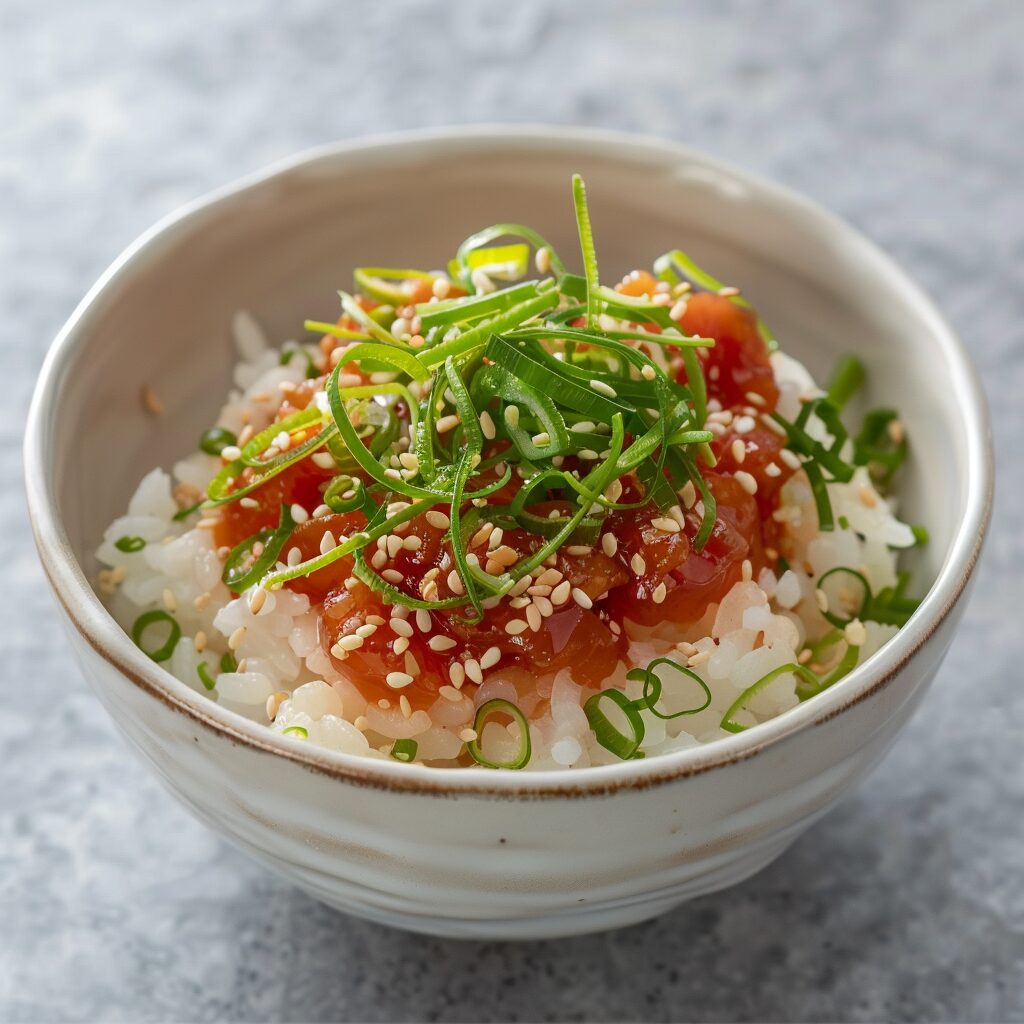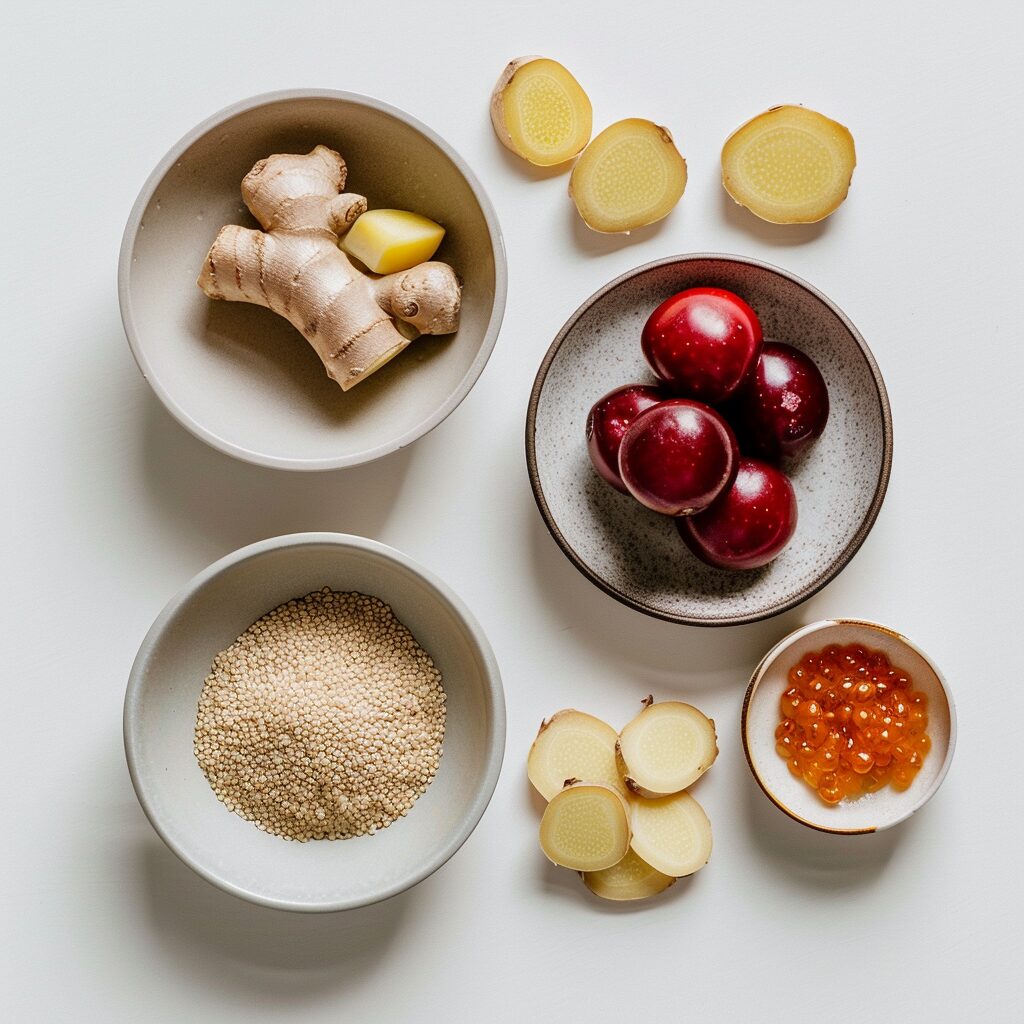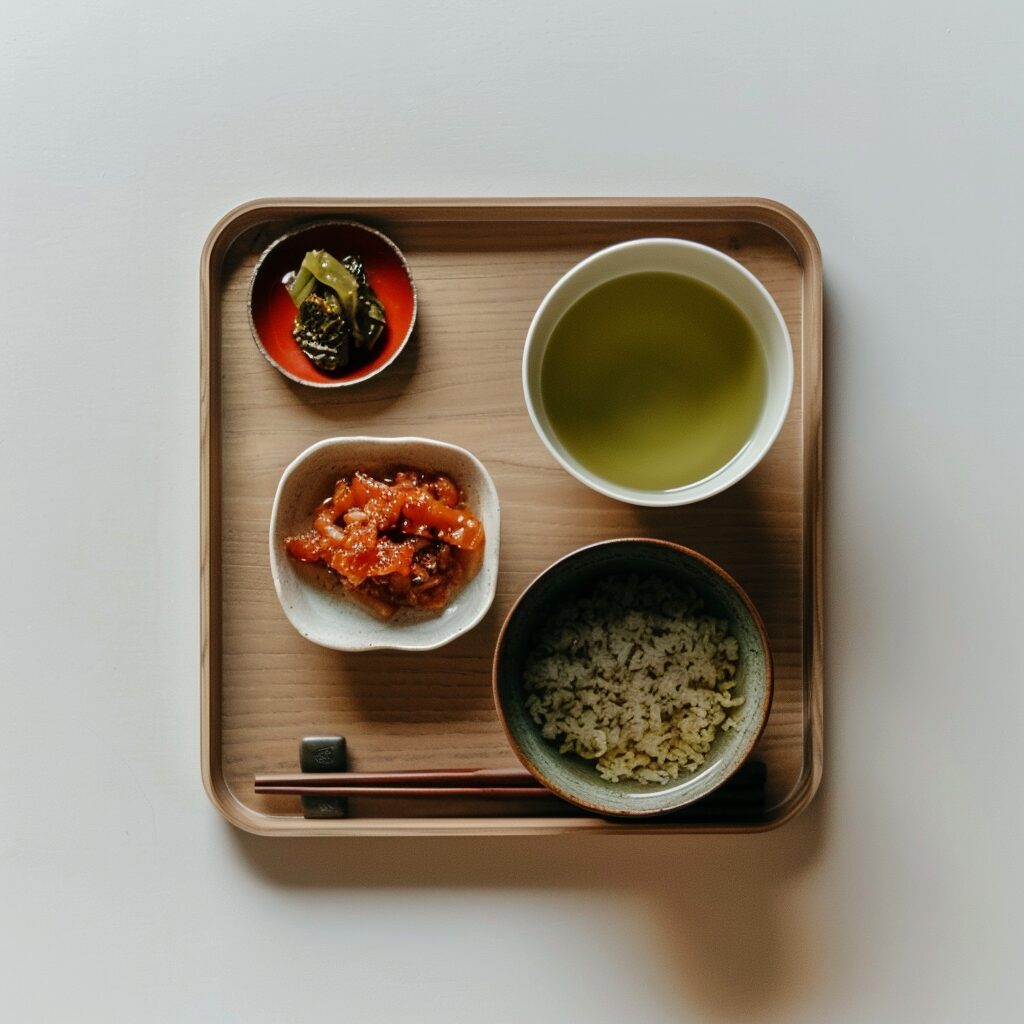Introduction
Ginger Umeboshi Takikomigohan (梅生姜炊き込みご飯) is a classic Japanese rice dish where brown rice is cooked with ginger and umeboshi, creating a unique blend of tart, spicy, and umami flavors. Takikomigohan, a style of rice cooked with various seasonings and ingredients, is a comforting staple in Japanese households. I remember the first time I tried this recipe, enjoying the burst of tangy umeboshi with the gentle warmth of ginger. It’s a satisfying, wholesome dish that’s simple yet layered in flavor.


Cultural Context
Takikomigohan has long been a comforting dish, often associated with home-cooked meals. Traditionally, it’s prepared by cooking rice together with seasonal ingredients like vegetables, seafood, or meat. Umeboshi, salted and pickled plums, have a long history in Japanese cuisine as both a condiment and a health food, often found in bento lunches for their distinctive tartness and preservative properties. This dish is commonly served at family dinners, highlighting Japan’s emphasis on seasonal, natural flavors.
Ingredient Spotlight
Brown Rice: Short-grain brown rice adds a nutty flavor and chewy texture, making it more filling than white rice.
Umeboshi: Pickled plums provide a tangy, salty flavor that cuts through the richness of the rice, offering a bright contrast.
Ginger: Adds warmth and a hint of spice, balancing the tartness of the umeboshi.
Konbu Dashi: A broth made from dried kelp that adds a subtle umami undertone.
Health Benefits
This dish is a powerhouse of nutrition, thanks to the fiber-rich brown rice and probiotic-rich umeboshi. Ginger is known for its anti-inflammatory and digestion-enhancing properties, while the konbu dashi provides essential minerals and amino acids.
Cooking Tips
Rice Measurement: Use the measuring cup provided with your rice maker for accurate measurements and to avoid mushy rice.
Adjust Water Levels: Slightly underfill the water to achieve firmer, drier rice or experiment with different levels to find your preferred texture.
Cut the Ginger Thinly: Cutting the ginger into matchstick-sized pieces ensures even distribution and a balanced flavor.
Serving Suggestions
Serve Ginger Umeboshi Takikomigohan as a main or side dish, garnished with chopped green onions or toasted sesame seeds. Pair it with grilled fish or miso soup for a balanced meal. The refreshing tartness of umeboshi pairs well with cold green tea or a light, dry sake.


Ingredients
- 2 cups brown rice, short grain
- 1 Tbsp shoyu (soy sauce)
- 2 cups konbu dashi or konbu shiitake dashi (enough to fill to the 2-cup line in your rice maker)
- 4-6 pieces umeboshi (2-3 Tbsp worth of the meat)
- 1-inch ginger, cut into matchsticks
Instructions
- Prepare the Rice: Rinse the brown rice and drain thoroughly. Add it to your rice maker.
- Add Ingredients: Pour in the soy sauce and dashi to reach the 2-cup water line. Add the ginger and umeboshi meat.
- Cook: Start the rice maker and let it cook according to the manufacturer’s instructions.
- Serve and Enjoy: Once done, fluff the rice and serve hot.
Variations
Vegetables: Add thinly sliced carrots, mushrooms, or edamame for extra texture and flavor.
Protein: Mix in grilled chicken or tofu for a more substantial meal.
Rice: Substitute brown rice with white or mixed grains for a different taste.
Conclusion
Ginger Umeboshi Takikomigohan is a flavorful yet simple dish that brings the comforting taste of Japan to your kitchen. The combination of tart, warm, and umami flavors creates a satisfying meal that’s both nourishing and delicious. Give it a try and let me know your thoughts! I’d love to hear your variations and suggestions for future posts. Enjoy cooking











Konnichiwa! (Hello!) I'm Pat Tokuyama, a Japanese tofu cookbook author, who travels for music, food, and adventure. If you like Japanese tea, checkout some of the newestorganic japanese tea, matcha bowls and noren and more!
** Curious about the Plant Based Japanese Cooking Club? ** Learn more here!